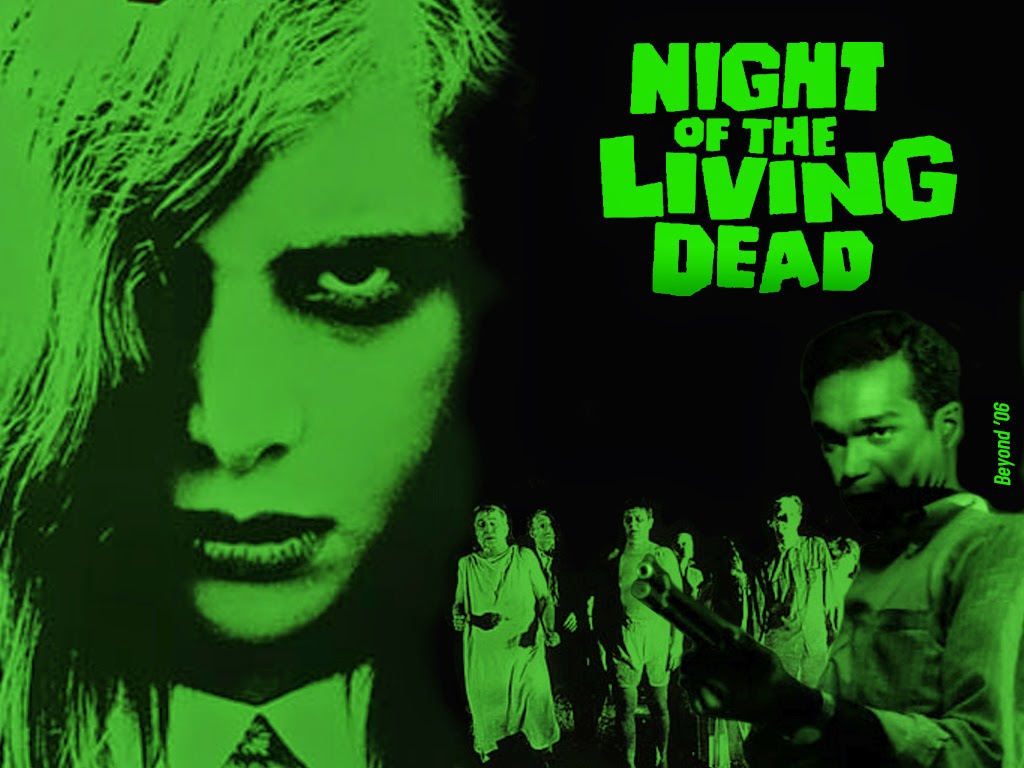By Steve D. Stones
There’s no question that director George A. Romero is the
Godfather of the zombie movie. His Night of The Living Dead (1968) is the
standard to which all following zombie movies are measured. Prior to this
landmark black and white film, the zombie was portrayed as a figure created
through voodoo ritual. This zombie was a slow moving, brain dead person moving
in a sort of somnambulistic trace.
Romero changed this stereotype. In Romero’s
world, zombies are vicious creatures who were once our friends, neighbors and
loved ones, and they eat the flesh of the victims they attack. This was a big change
from the voodoo zombie seen in Jacques Tourneur’s “ I Walked with a Zombie
(1943).”
Watch closely, and you will see a film steeped in political and
social commentary, and one which makes a statement about the breakdown of the
family unit. The hero is a young African American man named Ben – played by
stage actor Duane Jones. To cast a black man as the lead role and hero was
risky business in the 1960s following a decade of racial tension, riots and Dr.
Martin Luther King’s march on Birmingham.
The story may be familiar to you by now. Night of The Living
Dead concerns a group of terrified individuals who have trapped themselves in a
Pennsylvania farmhouse to protect themselves from hungry zombies. As the group
fights desperately to survive the attack of zombies outside the house, the real
struggle is between two men – Ben (Duane Jones) and Harry Cooper – played by
Karl Hardman. Both are desperate to have complete control over the situation. The
two continually argue with each other through the entire film.
Cooper’s wife and child and a young couple have barricaded
themselves in the basement. Ben insists that everyone come upstairs and protect
the ground level of the house. Cooper rejects this request, and a conflict
between the two men occurs. Both men think they have the best plan for
protecting the entire group, but as we see in the end – the zombies eventually
break into the house, and only Ben is able to race downstairs and barricade
himself in the basement for protection.
Ben survives the attack, but is mistaken for a zombie as a
posse approaches the house and kills him. His body is thrown on a pile of dead
zombies and burned at the end of the film. No heroes prevail in Romero’s zombie
world.
The opening sequence of Barbara (Judith O’Dea) and Johnny
(Russell Streiner) driving through an empty Pennsylvania cemetery covered with
fallen leaves is one of the most effective scenes in horror cinema. Without
showing a single zombie in the opening, the viewer immediately knows something
dramatic and intense is about to happen. From the moment Johnny is attacked by
a zombie wandering through the cemetery, the film never lets up on the zombie
assault.
Shot on a shoestring budget by a group of Pennsylvania
filmmakers working in television and commercials, the group formed the
production name Image Ten based on the ten investors who put up the money and
worked on the film. For further information on Night of The Living Dead, see
Danny Peary’s “Cult Movies volume one” and Joe Kane’s excellent book “Night of
The Living Dead – Behind The Scenes of The Most Terrifying Zombie Movie Ever.”
A remake was made in 1990 and 2006. The 2006 remake is a 3-D
movie that comes with 3-D glasses if you buy the DVD. Avoid the 30th Anniversary print
with new scenes added. Romero had nothing to do with this version, and if you
see it – you’ll understand why. The new scenes add nothing to the original
film, and do not blend well with the original print. Also avoid the computer colorized print that
was released on VHS in the 1980s. The zombies are portrayed in a ridiculous
green color that is laughable.
Don’t miss Romero’s excellent 1978 follow up – Dawn of The
Dead. This sequel steps up the graphic horror and violence about ten notches
and is in color. Happy viewing.



No comments:
Post a Comment